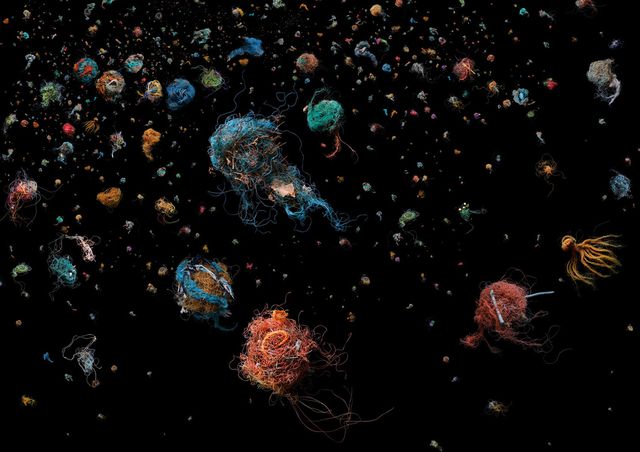
Photographer couldn’t stop collecting, cataloguing, and photographing trash. The 48-year-old from Leeds, England, picked ocean debris as the central theme of a school photography project. She often went to the beach three times a week for collecting, and sometimes filled multiple bags from just a few hours of walking the shoreline, yet she still couldn’t stop gathering when she went on pleasure jaunts. “I’d just find myself drawn to picking things up,” she says. “I should just be out with friends, but I find I just can’t walk past things.” Her passion paid off. She began photography classes five years ago, earned a Masters this past July, and was recently nominated for a award for “,” a collection of images that showcase groups of marine debris. We called her at home in England to find out how she made old trash look so good.
View a gallery of Soup.
Was “Soup” the first big photo project that you’ve done?
No. For the last four years I’ve done all sorts of types of photography. I did a project before “Soup” called “Indefinite.” That’s about different types of debris and the amount of years it takes to decompose. I made a book about it, and each caption was just the amount of years. It’s just sort of to hit home on how long these things last out there.
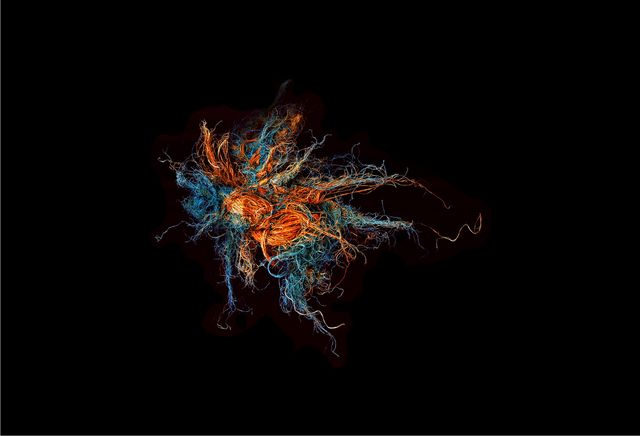
1 year, by
How much trash do you have?
Well, I’ve had to get a small shed to put it in. I do have quite a lot. I do have stuff that I’m quite precious about. Really unusual things I have in boxes, and it’s all catalogued and listed. And I have several drawers and boxes. I have things outside that are in sacks. For example, floating buoys, which are made of thick plastic that cracks. So I have sacks of fragmented fishing buoys outside. So, yeah, quite a lot. I don’t throw anything away.
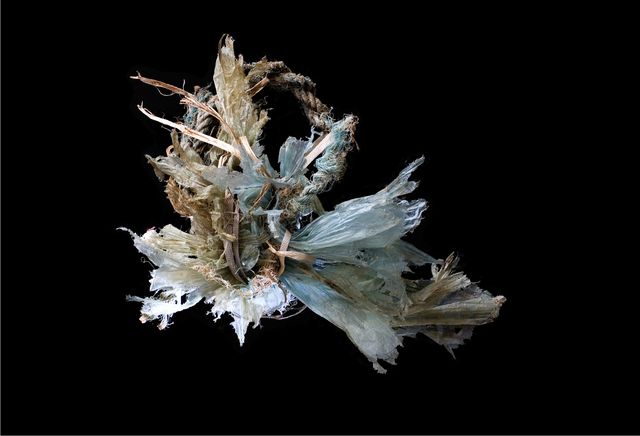
What do neighbors say?
They haven’t said anything yet. I’ve put most everything in the shed and hid bags under the steps so it doesn’t look like a junkyard.
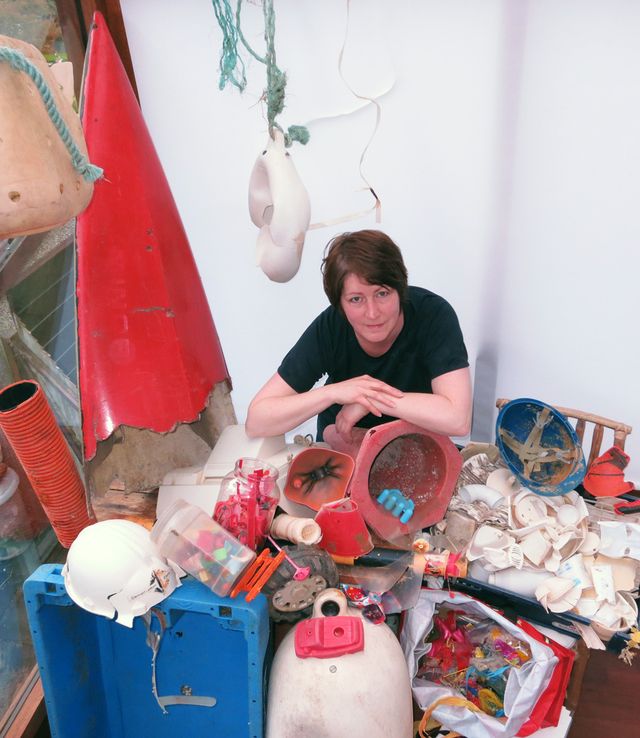
Where did your passion for photographing trash come from?
Two things, probably. I’ve been kind of obsessed with collecting, generally. I lived near the sea as a child, and we spent quite a bit of time collecting natural things—like bits of driftwood. I’ve continued to do that, but as I’ve been walking up and down I’ve noticed more debris than natural objects. Combine that with a fascination of the objects, and an interest to see where they’re coming from that led me to do more research. I quickly hooked up with the . When you start Googling ocean debris and plastics, they come up quite quickly. It became something I couldn’t move away from. I felt I had to do something about it through my work.
How did you decide to do “Soup”?
It was because, when I spoke to people about the actual , not many of them had heard about it. Lots of people didn’t realize there was a problem in the ocean with plastic. I just found that amazing. Here in the U.K., there just didn’t seem to be an awareness of what was going on and that just fired me up. So hopefully people would see my work and then question what it represents.
How did the project evolve?
I took initial shots of the debris on the beach, which were OK, but not anything different than what anybody else could do. I think people kind of get anesthetized by images they see every day. You can see pictures of rubbish floating down a river, but you don’t really take it in. I wanted to do something that I felt people couldn’t do themselves. I also wanted to attract the viewer to look at the image. If it was a bit more enticing they would spend a longer time looking at it, and then kind of question what it was and what it represented.
How long did you collect the trash?
I was collecting and sorting for over a year. Once you have your ideas and put them together, it’s just the shooting, and that’s the same for everyone. But it’s also the composition, and that’s based on showing [the pictures] like fish and jellyfish. The [images] do relate to natural things in the ocean. I’ve kind of based them on natural things that should exist, and I’ve replaced them with the plastic.
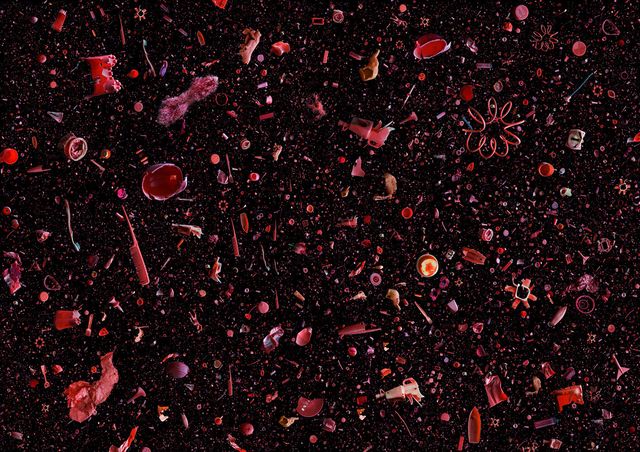
How did you take the pictures?
I have collected the plastics from all around the U.K. and Europe, and I have been sent some from America, so the collection represents a global representation of what’s found. I brought some back to my studio and placed it in layers on a black background. I use natural light from one direction. Hopefully it gives people the feeling that the plastic is in suspension in the sea. The camera I use is a Canon 5D.
The plastics are laid on black velvet. It doesn’t reflect any light. It’s very absorbent. They’re shot at the same exposure and are not enhanced in any way. I’m not manipulating color. I’m taking a three, four, five-second exposure and that gives a full color, and a tone of the objects. I wanted them to be recognizable so people will relate them to what they’ve thrown away, and where they end up.
And you list every single piece of trash in the picture?
Everything is catalogued that I collect. I’ve written down when I’ve collected it, where I’ve collected it, and sometimes I’ll even catalog plastic from the same place—a meter square from three different places on the beach. So I’m quite conscientious about logging everything. I think it’s quite important to list everything that is in the images, because it’s for people to see and think about when they throw things away. “Oh right, that’s that there.” They may think twice about purchasing a piece of plastic packaging if they see it. It’s all to do with the thinking behind just stopping people from buying unnecessary plastics—single-use plastics that can be a problem.
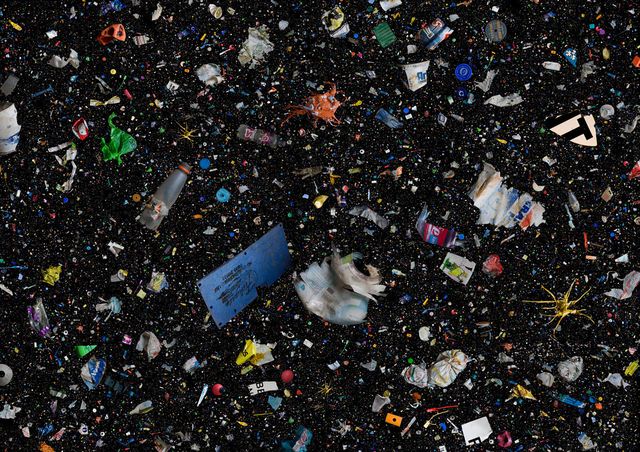
How do you pick what plastics you arrange together?
I put them together in groups, [for example] all the things that have letters and numbers on them. I just thought they would make for more interesting images if they were in a collection. Also, it’s just to show that there are infinite collections. I’ve still got bits of 20 or so images I could make from collections of a specific color or a specific object. For example, footballs, I’ve got hundreds of footballs. If I’m walking down the beach on an average day, I can find eight footballs. There is something wrong with that.
Do you have a favorite shot?
I think I quite like the turtle image, which is all blue and made up of plastic turtles. That image was made from the original toys that escaped from a container ship in the Pacific in 1992. I think it best represents the sea. It’s hard to see, but there are actually four bath toys: a beaver, a turtle, a duck, and a frog. They are all in there small, but I did want to enhance the turtles to bring out the feeling of the sea. Curtis Ebbesmeyer, [an oceanographer who studies ocean currents by tracking debris], sent me the toys. He got one of his friends in Alaska to collect them. It kind of meant a lot. He sent me one that he found in 2008. While for some of the plastics, I don’t know where they’ve come from and how long they’ve been in the sea, this one object is from a specific date. It existed for 16 years in the North Pacific or thereabouts.

Turtle, by
What do you hope people’s reaction is to these photos?
Above all else, I hope my work will increase awareness of marine plastic debris. I don’t expect it will turn someone into an environmental activist overnight, but if it makes people take a second look or linger over the images? People take things in, either consciously or subconsciously, and it will always be in their mind to think about plastics and that there is this big garbage patch out there. However they might pass that on to other people, even if it sort of inspires them to talk about it, any sort of small action would have achieved my intentions.
Some people say that they find the images visually beautiful, but they represent a problem, so how do I reconcile that? I probably answer that by saying that I intend for them to be beautiful, and that by enticing people in, they discover the real meaning. I think by doing that, it creates a more lasting impact that I hope will lead people to act.
To view more images by Mandy Barker, go to the Soup gallery.
H/T:
–Joe Spring